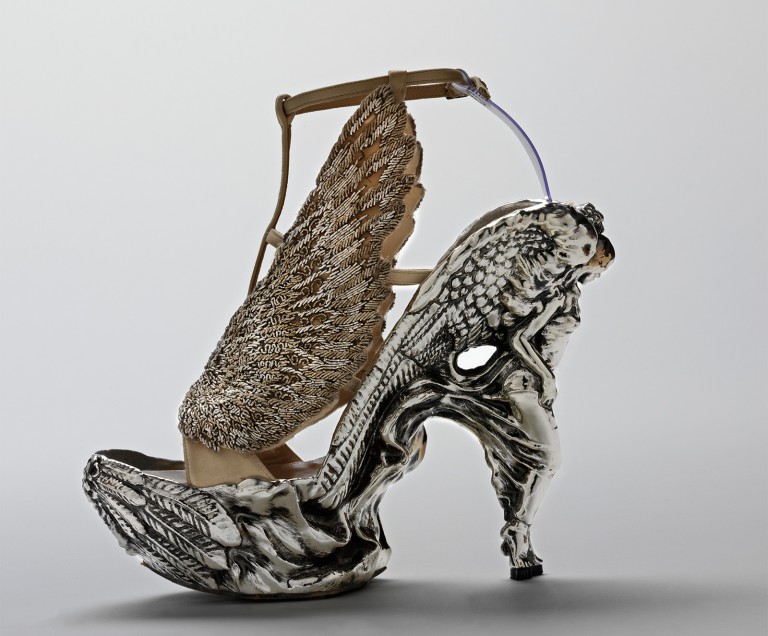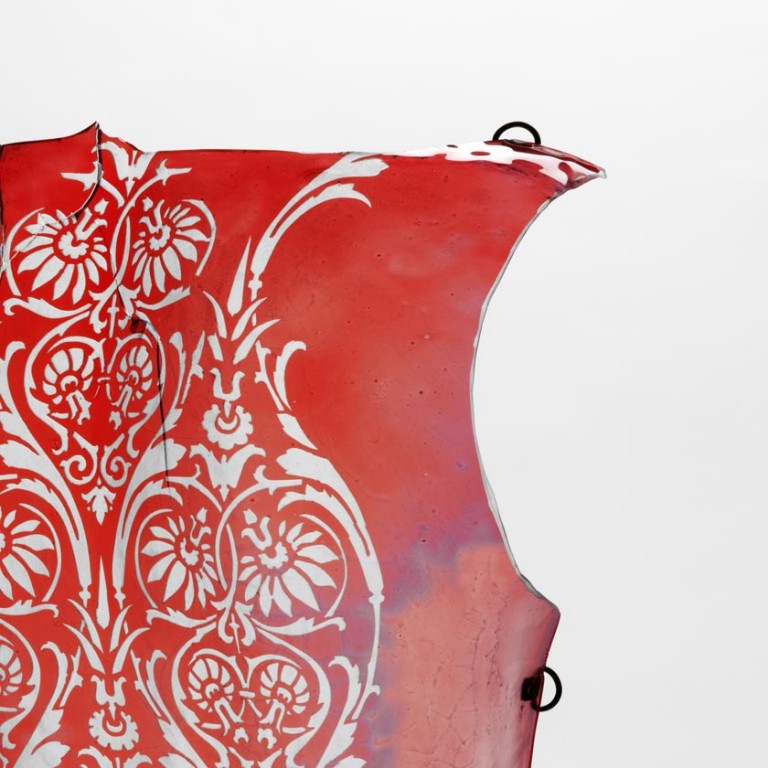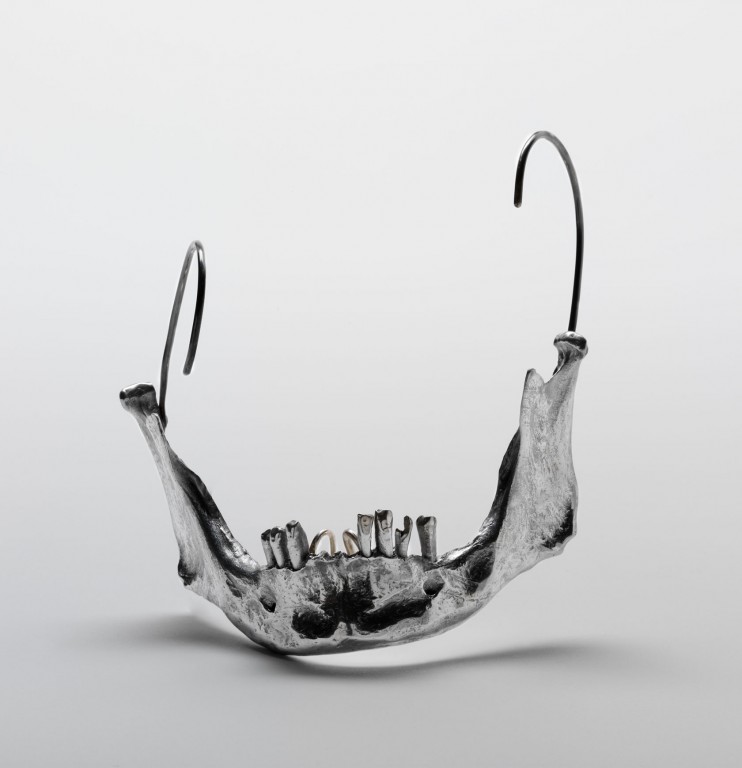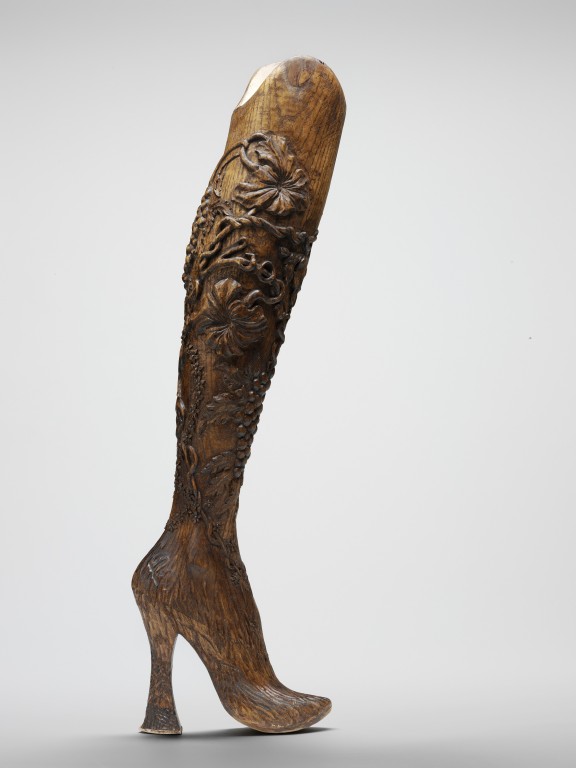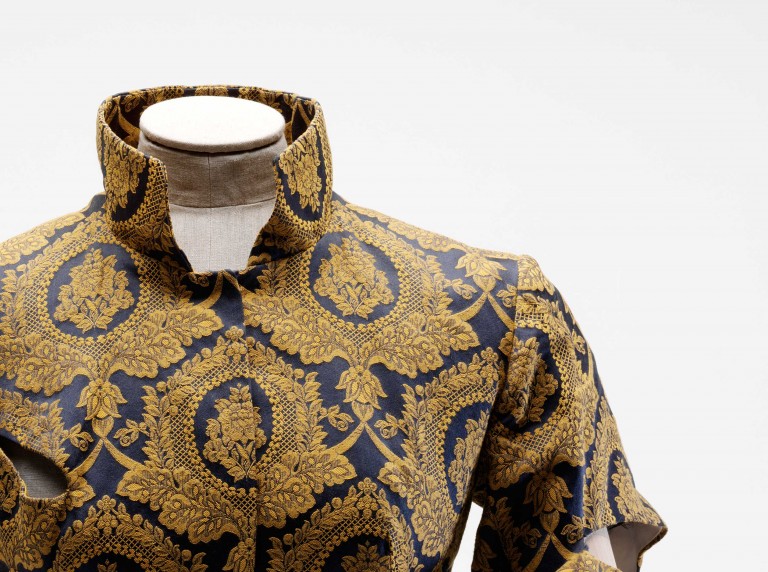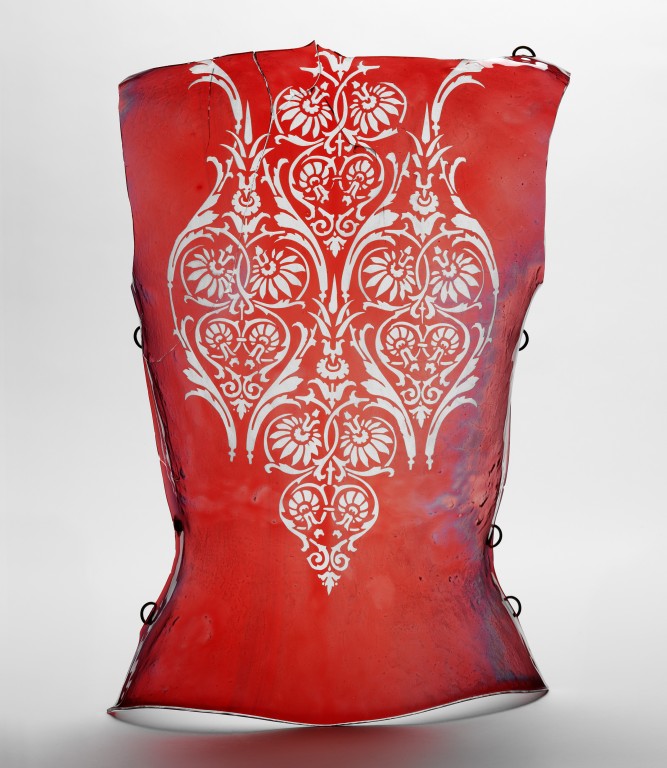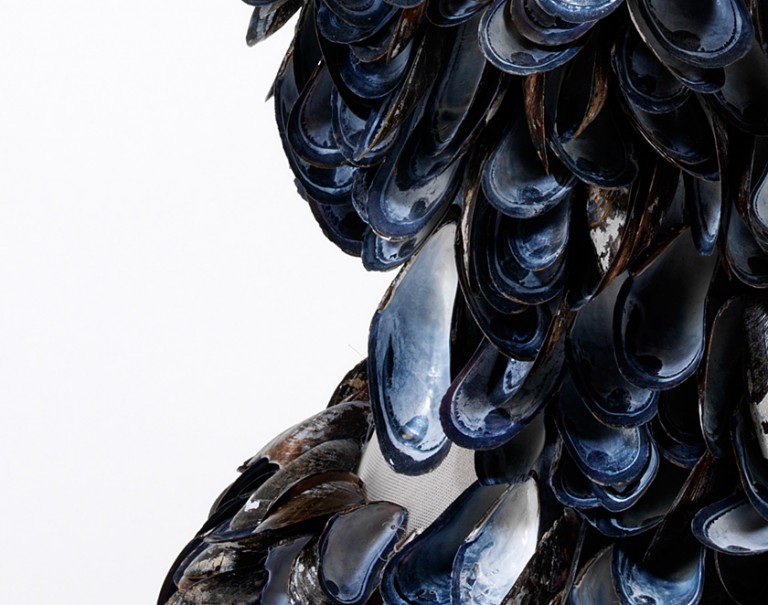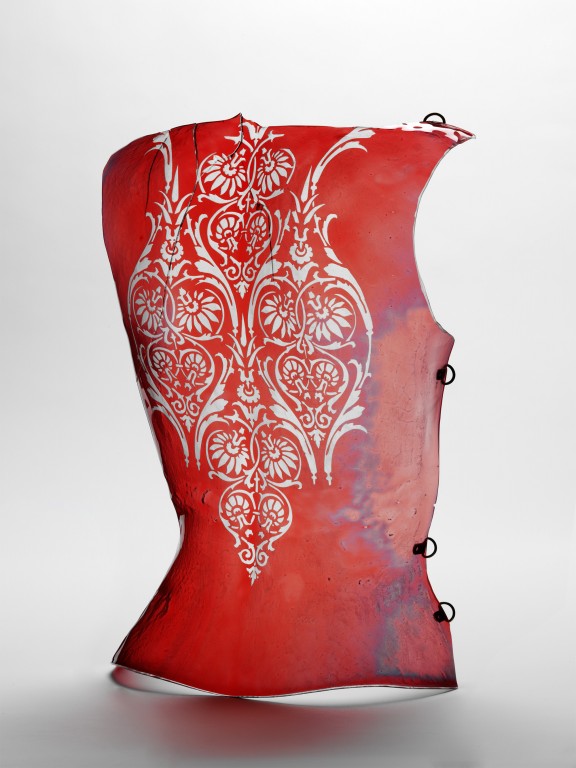Cuirass (back plate)
Nature and human anatomy were frequent sources of inspiration for McQueen. The etched floral design on this glass back plate, or cuirass, shows how McQueen transposed nature onto the body.
Model Laura Morgan wore the cuirass on the catwalk. When interviewed by fashion historian Caroline Evans, Morgan recalled being told, ‘If you trip, you’re a goner!’ She also recounted that it ‘was the most terrifying piece to wear…The problem with the glass corset was I got put in a really tight skirt. I just couldn’t move my legs. It was petrifying because I just felt “I’m falling! I can’t move!”’
McQueen commissioned Columbia Glassworks, who were based in East London, to create two glass bodices, a headpiece, a collar and lapel, a belt and a pair of eyewear glasses for the collection. Because the construction process of burning and sandblasting the glass proved demanding, only one of the glass bodices was produced. Designer Nick Blackmore and RCA graduate and glassmaker Edward Nevill used an expensive glass, overlaid with a thin layer of red that had been mouth-blown in Germany. The first two attempts smashed in the kiln and a third broke while it was being sandblasted. The last attempt succeeded after being in the kiln for three days at temperatures of up to 800 degrees, before being sandblasted and finally sealed.
McQueen supplied Blackmore and Nevill with rough sketches from which to work. He wanted the floral design to be based on a Victorian-style pub mirror and illustrations in architect Owen Jones’s book The Grammar of Ornament (1856), a source that inspired a number of McQueen’s prints throughout his career. The decorative floral pattern on the cuirass, which also evokes William Morris’s floral wallpaper designs, consists of passion flowers, leaves and stems that curve around the breasts and stomach.
This cuirass is particularly interesting because it demonstrates the breadth of McQueen’s creative collaborations, which extended to blacksmiths, wood carvers, glassblowers and welders, and emphasises the importance of London’s East End as a creative hub during the late nineties. Hoxton Square was the epicentre of the capital’s thriving art and music scene. Jay Jopling’s White Cube art gallery and several of the Young British Artists (YBAs), the group of artists who began showing their work in London in the late 1980s, were located in the area near to McQueen’s design studio. Columbia Glassworks was one of ten craft-based studios located in Sunbury Workshops just off Arnold Circus. The area’s creative practitioners collaborated across disciplines, often for little or no pay. McQueen recalled in a 2006 interview, ‘Everyone worked together at the beginning of the nineties. Teams made it work. We were all working for nothing because we needed to do it’.

